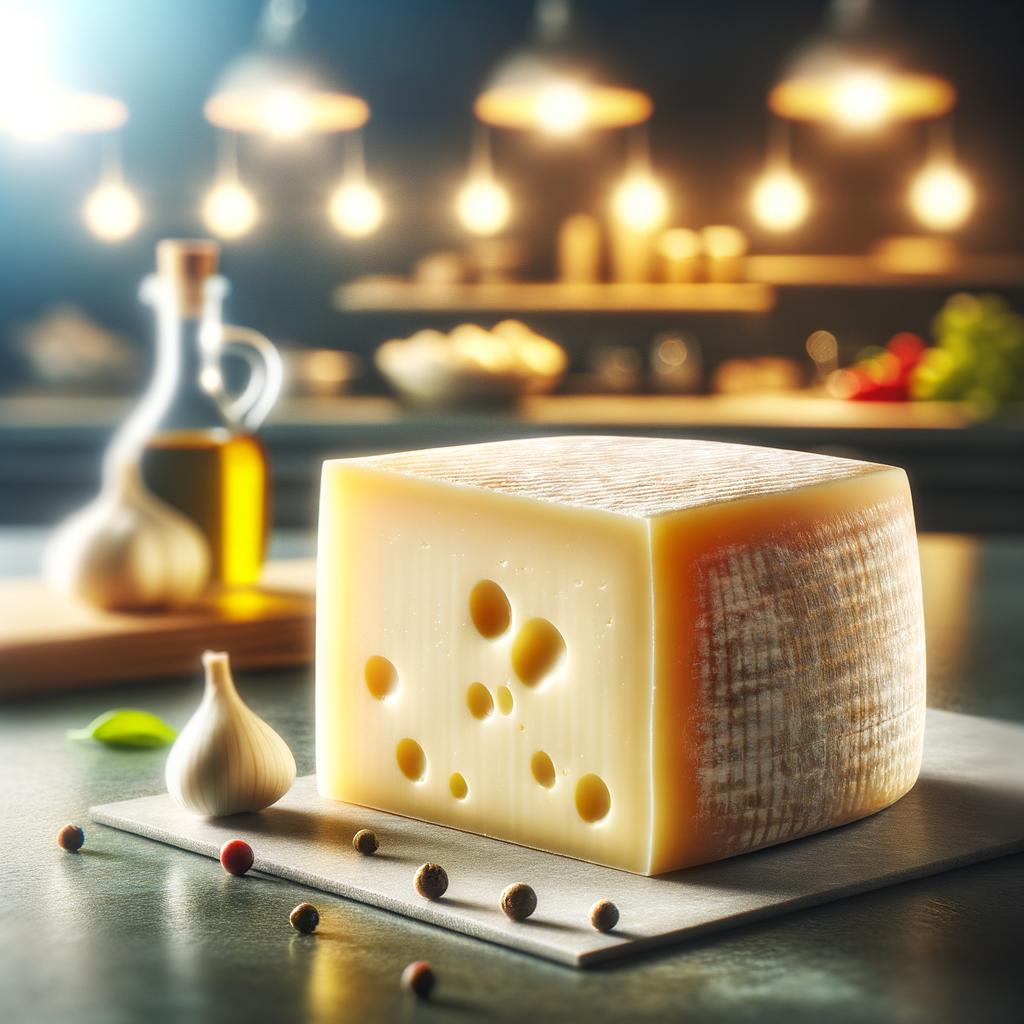Provolone Cheese

Description
Provolone cheese is a charming, full-bodied character in the world of dairy. It is an Italian cheese made from cow's milk whose origins lie in Southern Italy. It's a semi-hard cheese with a smooth, creamy texture that can vary from firm to very hard, depending on its aging. Its color ranges from pale yellow to straw-yellow. The flavor profile of provolone is quite unique - it starts off with a mild, sweet taste when young, but as it ages, it develops a sharper, more complex flavor with subtle hints of fruit and nuts. The cheese is often shaped into interesting forms like a pear, sausage, or cone during the production process, adding to its unique charm.
Primary Uses
Provolone cheese is a versatile player in the culinary world. It's a popular choice in sandwiches, pasta dishes, and pizzas, adding a delightful creaminess and depth of flavor. It's also a star performer on cheese platters, paired with fruits, nuts, and a good glass of wine. In Italian cuisine, it's often used in baked dishes, stuffed into peppers, or melted over veal or chicken. Outside the kitchen, provolone has a cultural significance in Italy, being a traditional part of certain regional festivals and celebrations.
History
The history of provolone cheese is as rich as its flavor. It dates back to the 19th century in Southern Italy, where it was made by cheese artisans using traditional methods. The name 'provolone' comes from the Italian word 'prova' or 'provolone', which means 'trial' or 'test', hinting at the meticulous process of its creation. Over time, the production of provolone moved north, and it became a staple in Northern Italian cuisine. There's an intriguing tale that the unique shapes of provolone were inspired by the cheese makers' desire to create a cheese that could be easily transported by tying a rope around its 'neck', although this story is more of a romantic myth than a proven fact.
Nutritional Information
Provolone cheese is not just a treat for the taste buds, but also a nutritious addition to the diet. It's high in protein and calcium, making it beneficial for bone health. It also provides a good amount of vitamin A and B-complex vitamins. However, as with most cheeses, it's high in fat and calories, so moderation is key. Compared to other cheeses, provolone has a slightly lower sodium content, making it a better choice for those watching their salt intake. Its nutritional profile, combined with its rich flavor, makes provolone a delightful and wholesome ingredient in the culinary world.

